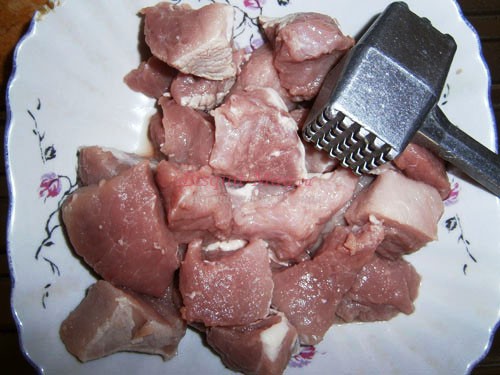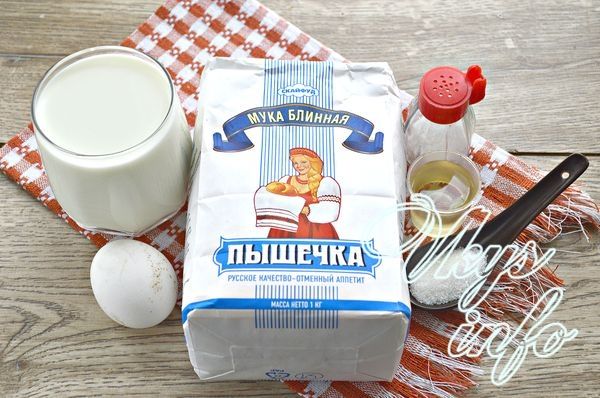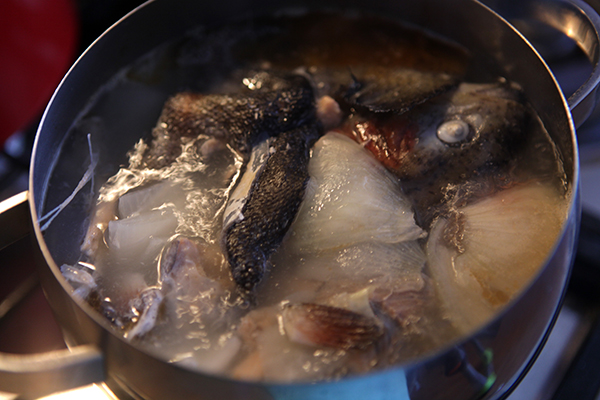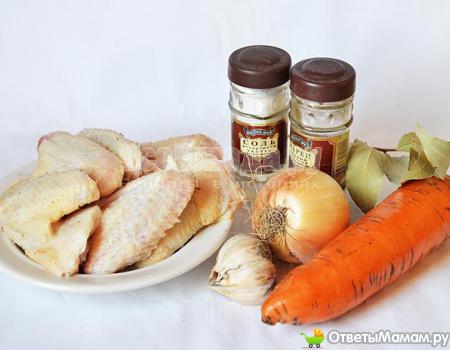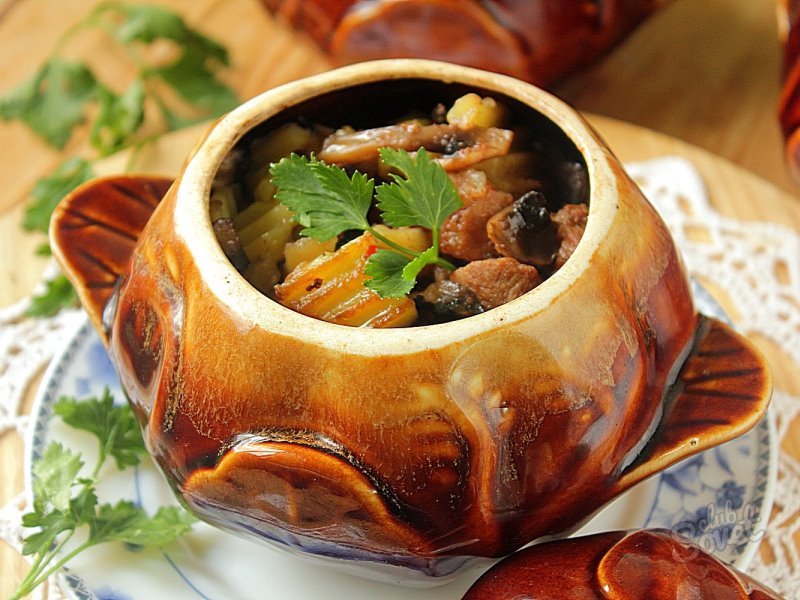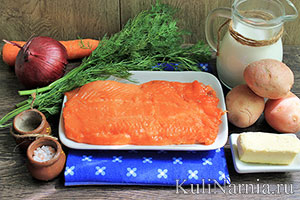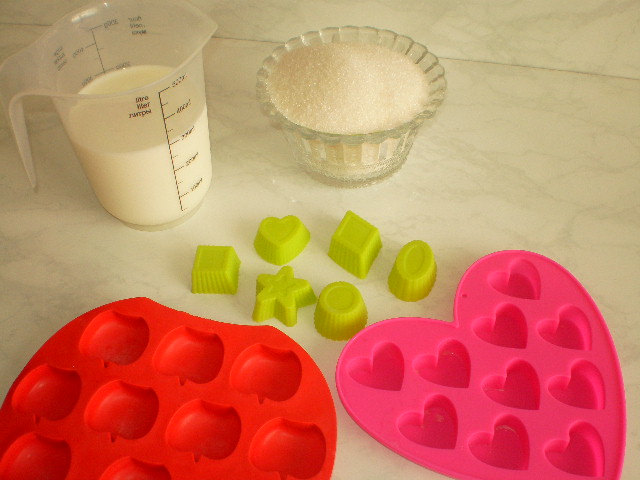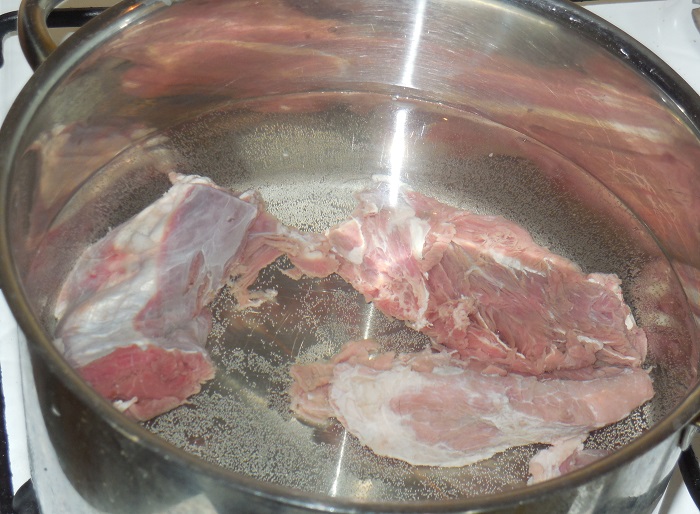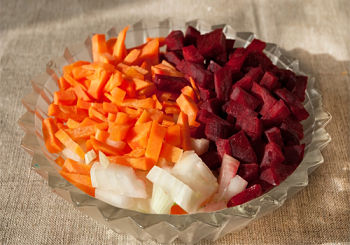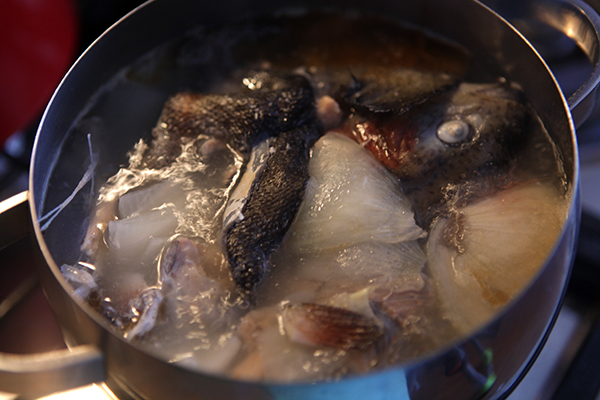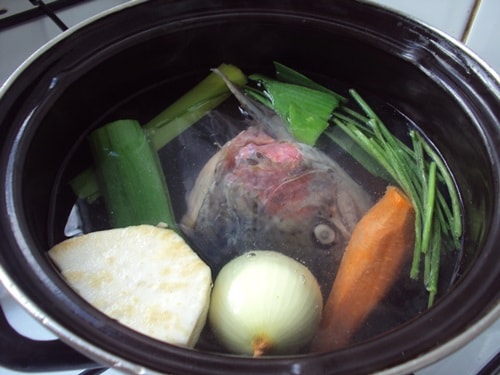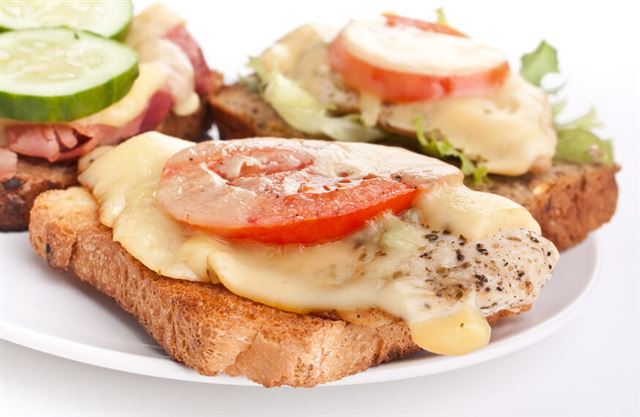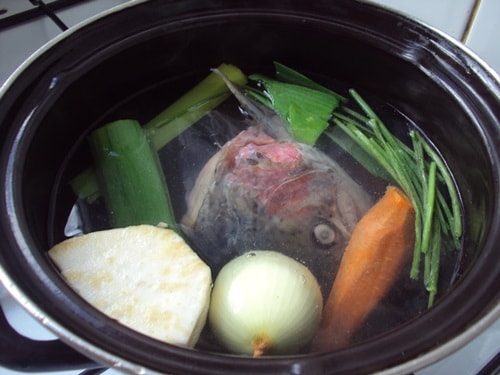How many carbohydrates are in 100 grams of boiled buckwheat. How many calories are in buckwheat, the benefits and useful properties of cereal
For a balanced and dietary diet, eating whole grains is one of the main factors. Buckwheat is one of the key places due to its high nutritional value, rich biochemical composition and excellent taste. The calorie content of boiled buckwheat is quite low, which, in combination with vitamin and mineral characteristics, makes it one of the main elements of many diets and methods of healthy eating.
Dietary properties of buckwheatBuckwheat contains a wide range of minerals and a storehouse of vitamins, as well as a host of nutrients:
- 15% of the most important amino acids, the list of which allows this cereal to compete with meat products;
- about 60% of carbohydrates, among which there is absolutely no fast and easily digestible, that is, sugar and glucose;
- 3% of fats, among which the majority are healthy unsaturated fatty acids;
- among the rich composition of vitamins, folic acid, thiamine, and niacin are leading;
- buckwheat has one of the most consistent values \u200b\u200bin mineral content; it contains a whole gamut of micro and macro elements - silicon, phosphorus, iron, magnesium, calcium, zinc and others;
- buckwheat dietary fiber has the ability to accelerate metabolic processes and cleanse the digestive system.
How many calories are boiled buckwheat?
In its raw form, buckwheat has a fairly high calorie content of 305-315 kcal per 100 g, but during cooking, the energy value of the dish is significantly reduced. When preparing buckwheat porridge, vegetable and meat broths, milk or just water are used, but in order to count calories in boiled buckwheat, you must first take into account the energy value and weight of cereals. From 100 g of dry cereal during cooking, 300-320 g of finished porridge is obtained.
Depending on the type of cereal and the method of preparation, adding sugar, honey, milk or butter, the calorie content of boiled buckwheat can be from 100 to 135 kcal. The highest energy value and health benefits are possessed by the kernel, whole buckwheat grain with an undisturbed structure, and slightly buckwheat calories from buckwheat flakes.
It is not difficult to calculate the energy value of buckwheat dishes, given the calorie content and weight of foods added to buckwheat. For example, the calorie content of boiled buckwheat with oil will be about 133 kcal if you add 5 g of natural butter with an energy value of 660 kcal per 100 g to the dish.
Calories 100 g boiled buckwheat with various additives

Buckwheat dishes are useful for absolutely everyone - people who are prone to anemia, diabetics, children, pregnant women, the elderly and everyone who wants to lose weight and normalize metabolism. Buckwheat diet is one of the most sparing ways to quickly and without harm to health to lose weight.
The main aspects of buckwheat dietThe basis of the buckwheat diet is buckwheat boiled on water, the calorie content of which has the lowest rate. The duration of the diet can be from 3 to 7 days. The diet includes, in addition to the main dish, vegetables, herbs, dried fruits and sour-milk products.
There are a large number of options for buckwheat diet, buckwheat is often combined with kefir, it also goes well with such  dried fruits like raisins, prunes, figs, dried apricots. To quickly get rid of extra pounds, you can spend a week diet on boiled buckwheat and kefir, adding fresh vegetables and fruits to increase the vitamins.
dried fruits like raisins, prunes, figs, dried apricots. To quickly get rid of extra pounds, you can spend a week diet on boiled buckwheat and kefir, adding fresh vegetables and fruits to increase the vitamins.
Low calorie boiled buckwheat allows you to use oil in small quantities, as well as low-calorie lean meat - chicken, turkey, boiled or stewed veal. The effectiveness of the buckwheat diet has been proven by many positive results, but with any type of rapid weight loss, there is a danger of the same fast gain of extra pounds if you do not follow a healthy diet after leaving it.
Buckwheat calories: ~ 309 kcal *
* average value per 100 g, depending on the variety, varies during cooking
Buckwheat is one of the most satisfying and wholesome foods with a low energy value. Porridges, side dishes, soups from it are recommended during a diet and during excessive physical exertion.
How many calories in 100 grams of dry buckwheat
The beneficial effect of buckwheat on the body is due to the balanced composition and content of a large number of nutrients. With its regular use, blood sugar decreases, pain manifestations of joint and skin pathologies are reduced, and the condition of teeth, hair, and nails improves.
The high nutritional value of the product is explained by the content of complex carbohydrates, thanks to which a person does not feel hunger for a long time. In addition, easily digestible proteins are present.
The calorie content of buckwheat in raw form per 100 g (this amount is enough to prepare 2 servings) is 306 kcal, which is less than that of any kind of rice (340 kcal), millet (334 kcal) and corn grits (325 kcal). You can read more about the calorie content of cereals.
Indicators of the energy value of different types of buckwheat:
- 290 kcal - food grain;
- 306 kcal - done;
- 308 kcal - green groats;
- 313 kcal is the core.
Calorie boiled buckwheat and buckwheat porridge
The nutritional value of porridge directly depends on the type of heat treatment and additional components that are added to enhance the taste. The calorie content of buckwheat cereal cooked in water is only 90 kcal, if you slightly salt the dish, the figure will increase by 15 units. With the addition of oil, the numbers will become even larger: with a vegetable spoon - about 150 kcal, cream - 170 kcal.
When cooking cereals in milk, the value of the finished dish will be from 118 to 160 kcal.
A large interval is explained by the use of milk with different fat content. During the diet, it is best to cook porridge with a low-fat product. Boiled cereal is an ideal breakfast for people who have high blood sugar or problems with being overweight. You can read about in our article.
Nutritionists advise to use buckwheat steamed with boiling water, the calorie content of which does not exceed 105 kcal.
The finished dish does not harm the figure and retains all the beneficial properties. The recipe for preparing cereals is simple: pour buckwheat with boiling water in a container (1 × 3 ratio), let it brew for about 12 hours under a cling film or a towel, and in the morning it is ready for use.
Calorie grits per 100 grams table
You can get acquainted with the energy value of cereals prepared in different ways from the calorie table per 100 g.

How many calories are in buckwheat dishes
Buckwheat with vegetables and meat is a great option for a full meal for people of all ages. A variety of recipes allows you to create a suitable menu for yourself: from low-calorie cereals with onions or mushrooms to nutritious first courses with the addition of meat and vegetables.
Options of buckwheat dishes:
- flakes - 330 kcal;
- bread rolls - 300 kcal;
- "Chinese" noodles - 350 kcal;
- with the addition of beef stew - 130 kcal;
- with kefir (0% fat) - 55 kcal;
- soup - 310 kcal;
- with chicken (lean breast) - 180 kcal;
- with onions - 150 kcal;
- with meat (minced meat) - 300 kcal;
- with mushrooms mushrooms - 100 kcal.
When choosing a diet menu, it is important to pay attention to the calorie content of various cereal dishes. It is best to brew it with boiling water and not add salt. With regular use of the product, you can not only lose weight, but also cleanse your body of harmful toxins and toxins. Read about.
Nutritious low-calorie groats are ideal for athletes, losing weight and those who monitor their health. Dishes from it are incredibly useful and for a long time leave a feeling of satiety.
Feb-20-2013
Buckwheat porridge is considered (deservedly) one of the most useful types of cereals. Probably, everyone who has ever been involved in cooking knows about the wonderful properties of this dish. And it’s not in vain that buckwheat porridge is called the “queen of all cereals”. This dish must certainly be present at least once a week on the table of each of us. The nutritional and energy value of this product is astonishing. This, in fact, will be discussed in our article. Calorie buckwheat porridge on the water deserves special attention - because buckwheat is an important dietary product.
Dietary properties:
Before talking about the calorie content of buckwheat porridge, let's turn to other, equally important properties.
There is a very simple recipe for making buckwheat porridge on water: pour raw buckwheat groats overnight with boiling water and leave to insist. And in the morning porridge will be ready for use.
Thus prepared porridge retains in its composition all the useful components and minerals necessary for humans, such as phosphorus, iron, calcium, copper, zinc, manganese.
And if you consider that there are a lot of the above minerals in buckwheat, then the benefits that buckwheat brings will be understood.
It is known that copper and iron are actively involved in the synthesis of hemoglobin by our body, and zinc is needed for the successful absorption of nutrients.
It has been established that in buckwheat porridge there are citric, menolenic, oxalic and maleic acid. These are organic acids, which are extremely important for diseases of the gastrointestinal tract, and simply contribute to normal digestion.
Buckwheat contains phospholipids, pigments and tocopherols. All these are active substances necessary for the exchange, regeneration and growth of body tissues and cells. Do not forget about vitamins PP, E, B1 and B2, the content of which buckwheat is ahead of other cereals. By the way, buckwheat also holds primacy in terms of the amount of vitamin P (routine). People cannot do without this vitamin, since it increases strength and reduces the permeability of blood vessels, enhances the contraction of the heart muscle, promotes blood coagulation and better absorption of ascorbic acid, and is useful for the thyroid gland. It should be noted that vitamin P is present not only in grains, but also in stems, in flowers and in buckwheat sprouts.
Now let's find out what the nutritional value of this product is.
Calorie buckwheat porridge on the water is 97 kcal per 100 g. product.
For the same 100 gr. accounts for 4 grams. protein, 2 gr. fat and 25 gr. carbohydrates.
And what is the calorie content of buckwheat porridge in water prepared in different ways? But this one:
Table calorie buckwheat porridge on the water, per 100 grams of product:
And the nutritional value of buckwheat porridge on water prepared in different ways is this:
Table nutritional value of buckwheat porridge on the water (BZHU), per 100 grams of product:
How to cook this dish at home? Yes, very easy! Here is one recipe:
Buckwheat porridge on the water:
Products:
- Buckwheat - 300 gr.
- Water - 600 ml.
- Butter - 100 ml.
- Salt to taste
Buckwheat, pre-sorted (to get rid of impurities) is washed with clean water, draining the water several times. The amount of water for cooking is taken twice as much as the amount of cereal. However, if you want to get soft porridge (for children, for example), then you can take cereals and water in a ratio of 1: 3. When the water in the container boils, add salt and put the buckwheat.
Put the butter and cover the dishes with a lid. Buckwheat should cook under a lid over low heat for about 15 minutes. Then it is removed from the fire. Done! Eat on health. Moreover, the relatively low calorie content of buckwheat porridge in the water will not ruin your figure.
Is it possible to lose weight on buckwheat porridge?
Buckwheat porridge is not only a delicious side dish, suitable for almost all main dishes, but also an excellent product for weight loss. It is buckwheat that many nutritionists recommend to people with increased body weight. And the point here is not only in low calorie content, but in the mass of useful properties that buckwheat has.
Due to its unique composition, buckwheat helps lower cholesterol and blood sugar, strengthens the walls of blood vessels, and rejuvenates cells. At the same time, buckwheat saturates the human body with iron, thereby preventing the development of anemia.
Buckwheat is rich in vitamins, minerals, as well as organic acids, antioxidants and dietary fiber. In addition, buckwheat porridge contains a huge amount of protein, which in its composition is practically not inferior to the protein contained in meat. And this means that a person who chooses buckwheat porridge for weight loss not only loses weight, but also takes care of his health.
During the diet, buckwheat porridge should be prepared in a special way. There is nothing complicated in it, but nevertheless it differs significantly from the usual methods of cooking cereals.
Long heat treatment is unacceptable. Our goal is to preserve to the maximum all nutrients, vitamins, minerals and dietary fiber.
For this, buckwheat porridge is steamed. First you need to thoroughly wash it from dust and dirt, as well as remove debris. Then the cereal is poured into a container with a lid and poured with hot water. The water level should be higher than the level of the croup by the thickness of a finger. The container is closed by a lid. For faster cooking, it is recommended, in addition, to cover everything with a towel so that the steam does not leave the container. In this state, the cereal is left for at least 2 hours.
Despite the fact that a large number of different useful components are still preserved, this cooking method cannot be called ideal. It implies, albeit a small, but still heat treatment. There is an opportunity to make buckwheat porridge even more useful.
Many recommend pouring cereal not with water, but with ordinary fat-free kefir. In it, porridge will be brewed for much longer, but a sour-milk drink will also give its benefit. It has a mild laxative effect. In combination with dietary fiber in porridge, such a dish will perfectly cleanse the body of all kinds of garbage.
In the evening, pour the cereal with a drink and leave it in the refrigerator for the whole night. It is advisable to cook porridge for the whole day in advance. Buckwheat porridge for weight loss, prepared in such ways, will bring you the most benefit.
Tasty, crumbly, satisfying and easy to prepare - this is the favorite buckwheat of many. Boiled in water or drenched in milk, generously seasoned with butter or mixed with fruits, stewed in a pot or in a slow cooker - it will certainly come out and will be a welcome dish for breakfast or a side dish for dinner and lunch. It is considered a diet, but is boiled buckwheat so simple, the content of BZHU in it can surprise.
The abbreviation BJU stands for simple: proteins, fats and carbohydrates. These are the very elements that provide the product with calories. The benefit for losing weight from a particular food lies in the balance of substances in nutritional value. So, in order to understand how buckwheat cooked on water is effective for weight loss, you need to calculate kcal - the same calorie content.
Why is buckwheat satisfying?
If you look at the calorie tables in the network and other sources, then the data on the BJU in boiled buckwheat will vary slightly. The following indicators can be considered average:
Thus, the percentage of protein, carbohydrates and fats in buckwheat on water can be expressed in the following diagram:
It turns out that carbohydrates in 100 gr. there are a lot of cereals, but it does not bring benefits for weight loss. But you should not worry about this, since they belong to the category of slow ones - they do not increase blood sugar levels sharply, like cakes, but gradually. That is, energy from buckwheat boiled on water is not immediately released and can feed the body for a very long time.
Therefore, with a small nutritional value, this cereal has significant benefits in losing weight. Only oatmeal (93 kcal per 100 grams) and pearl barley (102 kcal per 100 grams) can compete with it on the content of slow carbohydrates and the ratio of BJU.
But, despite this, buckwheat boiled on water is more often present in weight loss diets. So how now to benefit from this information?
A little bit about calories
The essence of any diet that works to lose extra pounds is simple: if usually a person receives 2000-4000 kcal with food, then this figure needs to be reduced. How many kilocalories to remove from the diet is decided on an individual basis, it depends:
- off the floor
- lifestyle,
- type of activity
- the presence of regular additional physical exertion.
It is clear that the loader spends more kcal than the office worker. Therefore, it is simply impossible for him to sharply reduce the nutritional value of food taken during the day - he will not cope with the work. The benefits of fasting are doubtful, and the lost weight can return, taking with it a few more kilograms.
The task is to reduce the number of kcal consumed on average to 1200-1400, how much specifically, let your nutritionist calculate.
Pros and cons of boiled buckwheat
How much will buckwheat have to eat for weight loss? This question excites those who decided to try to lose weight on this mono-diet. As in any diet that recognizes only one product in the diet, for effective weight loss you will only have cereals boiled in water. Only in this case, the amount of BJU will be optimal so that the hated centimeters melt before our eyes.
Here are some tips to make the benefits of this cereal tangible:
- You can not add a gram of sugar, salt and spices to the finished dish. Such seasonings cross out the entire diet. For weight loss on boiled buckwheat, it is not recommended to use any sauces, including tomato and soy. A few grams of butter can brighten the taste, but will not bring benefits, refuse them.
- To properly cook the cereal, which will make the menu for breakfast, lunch and dinner, you need to take the ingredients in the following proportions: 100 grams of buckwheat and water: 150 ml in order to steam the buckwheat in a thermos, and 200-250 ml for cooking in the usual way.
- There are tips that in the intervals between boiled buckwheat, you can consume 100 - 200 grams of kefir. It is believed that this product will support the digestive tract during the diet, contribute to weight loss. Kefir will add some variety to a boring diet, but you need to choose a low-fat product. Ardent supporters of boiled buckwheat do not add a gram of nutrients from other products to the BZHU from cereals, and even green apples are banned.
It is easy to guess that on one boiled buckwheat (although it can be consumed in any quantities) it is very difficult to last a couple of days. And it will take at least a week! What other troubles can expect those losing weight?
- Even taking into account the fact that 200 grams of boiled buckwheat, eaten for breakfast, contains enough BJU to “survive” before lunch, and then before dinner, there are still not enough calories. Many complained of nausea, weakness, pressure surges, and dizziness. If these symptoms occur, interrupt the diet and run to the doctor.
- Mono-diets are extreme, this can not be started during pregnancy, breast-feeding, with gastrointestinal diseases.
- BJU from boiled buckwheat provide energy, but vitamins and minerals will not increase a single gram. Nutritionists advise taking multivitamins in parallel.
It is better to evaluate all the risks and compare them with the benefits of boiled buckwheat nutrition with a doctor. In order for your favorite dress to sit freely, and the shape lost after a long weekend, it is enough to arrange a couple of fasting days a week, and not to torture the body with a satisfying, but extreme mode.
Buckwheat is known as a satisfying, but low-calorie product. It boils quickly on the water, turning into a healthy porridge. The calorie content of this product is interesting to people who monitor their weight and eat right.
Calorie content

Buckwheat tends to boil heavily in water. You can count calories by the amount of dry product, or find out the calorie content of a particular dish. 100 grams of dry buckwheat contains an average of 313 kcal. After cooking, it swells in water about three times. 100 grams of boiled buckwheat without additives contains an average of 103 kcal.
Nutritional value per 100 grams:
Buckwheat benefits

Buckwheat contains polyunsaturated fatty acids, which are necessary for human health. Its composition includes flavonoids, folic acid and many trace elements and vitamins.
Boiled buckwheat is a common element in the diet of people with diabetes because it lowers blood sugar. Increasing the metabolic rate and low calorie foods can lose weight. To save all the nutrients, buckwheat can not be boiled, but simply pour hot water for a long time.
The use of buckwheat in traditional medicine

With regular inclusion in the diet, buckwheat is capable of:
- cleanse the intestines and liver;
- lower blood sugar;
- relieve symptoms of osteoarthritis;
- strengthen capillaries;
- relieve depression by increasing dopamine.
Buckwheat Diet

Diets based on boiled buckwheat are quite popular. During a nutritional restriction, hunger does not occur. The composition of cereals, rich in vitamins and microelements, does not cause stress in the body from a lack of any nutrients.
The most effective diet based on boiled buckwheat is designed for two weeks. There are reviews of the loss of more than 10 kg of excess weight over these 14 days.
- Buckwheat is steamed with boiling water in a ratio of 1: 3 with water. Pour cereal in the evening, wrap the container with it in a blanket. By morning, the dish becomes ready to eat.
- There are no restrictions on the amount of food eaten.
- Do not add any spices.
- The last meal should be 4 hours before bedtime.
- Drink plenty of water.
- In addition to buckwheat, you can eat low-fat kefir and take vitamins.
Such a diet gives quick results, but should be discontinued if health conditions worsen. Caloric intake of the daily diet is on average about 1000 kcal.
In most cases, the diet is well tolerated. People note a feeling of lightness and good mood. In the case when there is no need to quickly lose weight, you can add any products in small quantities to the porridge.
Sometimes there is a constant feeling of hunger or nausea from the same product. It is permissible to periodically add raw vegetables without seasoning to the diet. If you can’t eat unsalted porridge, then salt should be added after cooking and in a small amount.
Recipes and their calorie content

